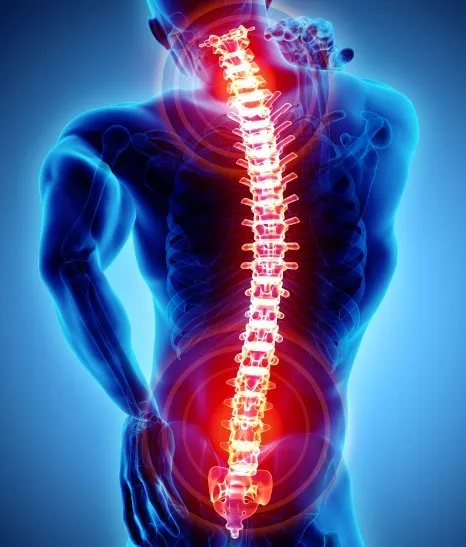Joint pain is a widespread issue that can affect individuals of all ages. From minor discomfort to debilitating pain, joint issues can interfere with daily activities and significantly reduce quality of life. Many people seek relief through searches for joint pain treatment near me in hopes of finding effective solutions to alleviate their discomfort. In this article, we’ll explore the causes, symptoms, and treatments for joint pain, providing you with a comprehensive understanding of this common condition.
Common Causes of Joint Pain
Joint pain can stem from a variety of causes, ranging from injury to chronic medical conditions. Here are some of the most frequent causes:
1. Arthritis
Arthritis is a primary cause of joint pain, especially among older adults. There are two main types of arthritis:
- Osteoarthritis (OA): This form occurs when the cartilage that cushions the joints breaks down over time, leading to pain and stiffness.
- Rheumatoid Arthritis (RA): RA is an autoimmune condition where the immune system mistakenly attacks the lining of the joints, causing inflammation, swelling, and pain.
2. Injury or Trauma
Injuries such as sprains, fractures, or dislocations can cause acute joint pain. Overuse injuries from repetitive movements, such as those related to sports or certain occupations, can also contribute to joint discomfort.
3. Gout
Gout is a form of arthritis caused by a buildup of uric acid in the bloodstream. This leads to the formation of crystals in the joints, resulting in sudden and severe pain, especially in the big toe.
4. Tendinitis
Tendinitis occurs when the tendons, which connect muscles to bones, become inflamed due to overuse or injury. This condition often affects the shoulders, elbows, and knees.
5. Bursitis
Bursitis is the inflammation of the bursae, small fluid-filled sacs that cushion the joints. This condition can cause significant pain, especially in areas like the shoulder, elbow, and hip.
Symptoms of Joint Pain
Joint pain can manifest in a variety of ways depending on the underlying cause. Some of the most common symptoms include:
- Swelling: The joint may appear swollen, tender, and warm to the touch.
- Stiffness: Difficulty moving the joint, particularly after rest or inactivity, is a common symptom.
- Redness: Inflammation can cause the skin around the joint to become red.
- Weakness: Affected joints may feel weak or unstable, making movement difficult.
- Limited range of motion: Joint pain may restrict movement and make everyday tasks more challenging.
When to Seek Medical Attention
While some joint pain may improve with rest and home care, certain situations warrant a visit to a healthcare professional. You should seek medical attention if:
- The pain persists for more than a few days.
- You experience significant swelling or redness.
- The joint feels warm to the touch, which could indicate an infection.
- You have a sudden inability to move the joint.
- The pain is accompanied by fever.
Treatment Options for Joint Pain
If you’re dealing with joint pain, treatment options vary depending on the cause and severity of the pain. Here are some of the most common treatments available:
1. Medications
Over-the-counter pain relievers such as ibuprofen and acetaminophen can help reduce inflammation and manage pain. In more severe cases, a doctor may prescribe stronger medications or administer corticosteroid injections to reduce inflammation.
2. Physical Therapy
Physical therapy is an effective way to improve joint function and reduce pain. A physical therapist can guide you through exercises that strengthen the muscles surrounding the joints and increase flexibility, helping you regain movement and reduce discomfort.
3. Lifestyle Modifications
Making changes to your daily habits can also alleviate joint pain. Regular exercise, particularly low-impact activities like swimming or cycling, can strengthen your joints and reduce stiffness. Additionally, maintaining a healthy weight can help reduce the strain on weight-bearing joints like the knees and hips.
4. Home Remedies
- Hot and Cold Therapy: Applying heat can help relax muscles around the joint, while cold packs can reduce inflammation and numb the pain.
- Rest and Elevation: Giving the joint time to rest and elevating it can help reduce swelling and pain, particularly after an injury.
5. Surgical Intervention
In severe cases where conservative treatments are not effective, surgery may be an option. Procedures such as joint replacement, particularly for the hips or knees, can provide long-term relief and improved mobility.
Preventing Joint Pain
While not all joint pain can be prevented, there are steps you can take to reduce your risk:
- Stay active: Regular physical activity helps keep your joints flexible and strong.
- Use proper technique: Whether you’re exercising, lifting, or performing repetitive tasks, using proper form can help prevent injuries that lead to joint pain.
- Listen to your body: If a certain activity causes joint pain, stop and rest. Continuing to push through the pain can cause more damage in the long run.
Conclusion
Joint pain is a condition that affects millions of people, but with the right approach, it can be managed effectively. By understanding the causes and exploring available treatment options, you can take steps toward relieving your discomfort and improving your quality of life. If you are experiencing persistent joint pain, consider seeking professional care from Active Life Physical Medicine & Pain Center, where expert treatment options are available to help you on your journey to recovery.
